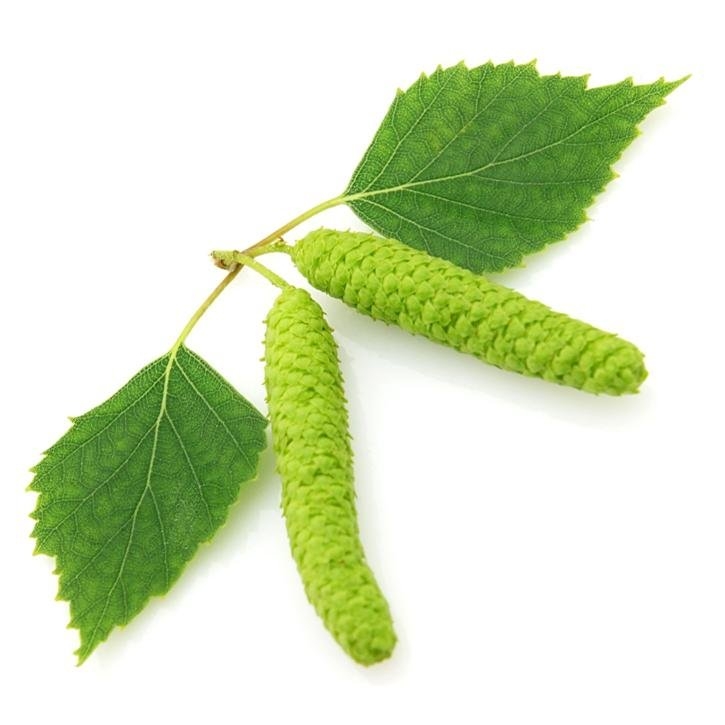It is originated in Northern Asia. Is normally found in the mountains and forests of the North and Northeast of Europe-Asia, at approximately 1,000 to 2,000 m in altitude. Abundant in river’s bank, streams and humid hillsides. Highly tolerant to acid and loose soil and very cold weather. It blooms around April-May. The flowers are harvested in spring. There are more than sixty different kinds of birches, mostly spread along the northern hemisphere of the planet.
Its bark is impermeable and has multiple uses: ancient shepherds use it to elaborate cups, and even snow boots; it’s been used for roofs, ships construction, thread spools, herring barrels, broomsticks, toilet paper (in Siberia), etc.
The birch’s pollen is the main cause of allergies in northeastern and central Europe countries, where it is found in high concentrations. Up to 30% of patients with birch pollen allergy might develop symptoms by eating or even just handling apple, apricot, cherries and dried fruits. Its blooming and pollination takes place during April and May, reaching its concentration peak during April.
Real Farmacopea Española, Suplemento 1998.
Farmacognosia. Jean Bruneton. 2ª edición. Editorial Acribia. SA.
Guía de las plantas medicinales. 4 ª Edición. Paul Schauenberg/Ferdinand Paris.
Plantas Medicinales y Drogas Vegetales para infusión y tisana. Edición española a cargo de: Salvador Cañogueral, Roser Vila, Max Wichtl.1998.
Pharmacognosy, Phytochemistry, Medicinal Plants. Jean Bruneton. Lavoisier Publishing.
Fitoterapia Aplicada. J.B. Peris, G. Stübing, B.Vanaclocha. Colegio Oficial de Farmacéuticos de Valencia 1995.
Fitoterapia: Vademecum de Prescripción. B. Vanaclocha, S. Cañigueral. Editorial Masson 4ª Edición.
Plantas Medicinales. Margarita Fernandez y Ana Nieto. Ed Universidad de Navarra. EUNSA 1982.
Plantas Medicinales. El Dioscórides Renovado. Pio Font Quer.
Plantas Medicinales. Thérapeutique-Toxicité. Christiane Vigneau. Masson, Paris 1985.
100 Plantes Medicinales. Max Rombi. Romart 1998.
The Complete German Commission E Monographs. Therapeutic Guide To Herbal Medicines. Mark Blumenthal. American Botanical Council 1998.
